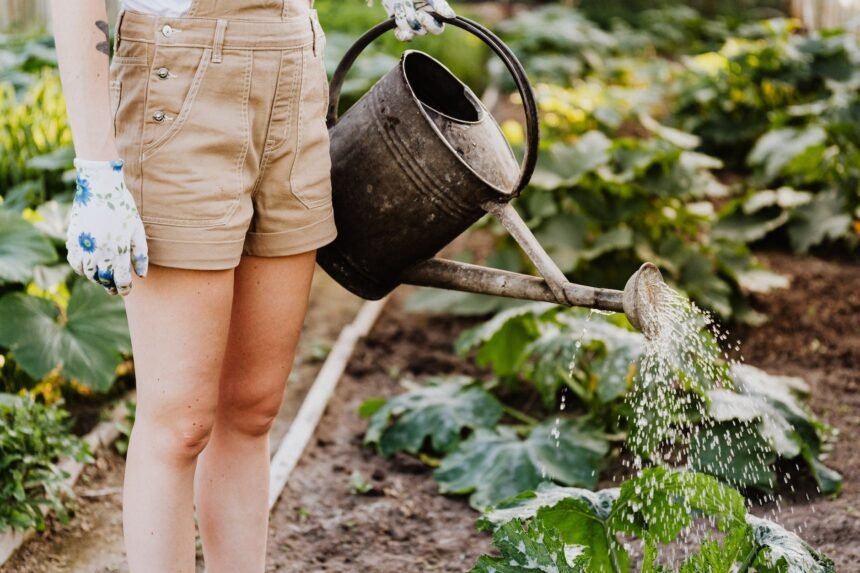Introduction
For those new to growing plants, the idea can seem daunting. With so many options and care requirements to consider, how do you choose which plants are right for you? The key is starting with easy, low-maintenance plants that can tolerate beginner mistakes. Growing the right starter plants will set you up for success and make the process enjoyable.
Why growing plants is beneficial
There are many reasons to welcome plants into your home or garden. Decoratively, plants lend color, texture, and warmth to indoor and outdoor spaces. Producing homegrown food saves money at the grocery store and provides very fresh ingredients for cooking. Caring for plants has also been linked to reduced stress and improved mental health.
Choosing the right plants
When deciding which plants to start with, consider the space you have available, the light conditions, your local climate, and how much time you’re able to commit to plant care. The best plants for beginners suit your conditions with minimal fuss.
The best beginner houseplants
These houseplants check the boxes for durability and simple care, making them ideal for plant parenting beginners.
Succulents
Known for their fleshy, swollen leaves and stems, succulents store water and can tolerate periods of drought once established. Popular picks include jade, burro’s tail, and echeveria.
Pothos
An easy-to-grow vining plant with variegated heart-shaped leaves. Pothos tolerates low light and inconsistent watering quite well.
ZZ plant
With upright stems and thick waxy leaves, ZZ plants handle low-light environments beautifully. They only require water every couple of weeks.
Peace lily
A classic houseplant with long dark green leaves surrounding a unique white flower. Peace lilies enjoy moderate light and average water.
Snake plant
Tall, rigid sword-like foliage makes the snake plant a dramatic addition. It actually thrives on occasional neglect when it comes to watering.
Philodendron
Graceful trailing philodendrons make excellent hanging plants. They adapt well to various light levels and are slower growing.
The best beginner garden plants
When planted at the right time in prepared soil, these garden plants reliably produce abundant crops with minimal work.
Tomatoes
A summer favorite, beefsteak, and cherry tomato varieties are produced heavily without much fuss. Just supply cages or trellises for support.
Peppers
Compact pepper plants yield crisp sweet or spicy fruits all season. Choose early-bearing hybrids for faster harvests.
Leafy greens
Salad fixings like lettuce, kale, and arugula grow quickly in spring and fall. Sow seeds directly in garden soil.
Herbs
It’s convenient to have favorites like basil, cilantro, and mint right outside your kitchen door. Herbs thrive easily in garden beds or containers.
Strawberries
This perennial produces sweet, juice-filled berries in summer from its dense ground-hugging foliage. Applying mulch reduces maintenance.
Caring for beginner plants
To help your new plantings thrive, provide adequate water, nutrition, and favorable growing conditions. Observe them routinely to detect pests or diseases early.
Watering
Check soil moisture with your finger and water at the first sign of dryness. Take care not to oversaturate the soil.
Fertilizing
Using a general houseplant fertilizer monthly gives indoor plants a nutrient boost. Outdoors, work compost, or granular fertilizer into garden beds seasonally.
Repotting
Transplant root-bound plants into larger containers with fresh potting mix for continued healthy growth.
Pest management
Wipe leaves with a damp cloth to remove aphids and spider mites. Applying horticultural oils can smother soft-bodied insects. Monitor for slugs, snails, and caterpillars outdoors.
Overwintering considerations
Some garden plants require shelter from harsh winter conditions. Tender perennials may need moving indoors or under protective row coverings.
Conclusion
Don’t let inexperience deter you from enjoying the perks of plants! Starter plants suited to easy care help beginners get comfortable with the plant parenting basics while enjoying decorative and edible rewards. Success with hardy houseplants and simple garden specimens paves the way for adding more variety down the road. Consult plant care guides and gardening references like this one to expand your horticultural horizons!
Frequently Asked Questions
What plants are good to start with?
Some good beginner plants include:
- Succulents – Easy to care for, low maintenance
- Snake plants – Only need to be watered occasionally
- Pothos – Hard to kill and tolerates different lighting
- ZZ plants – Thrive on neglect and low light
- Herbs – Fun to grow indoors and use for cooking
What is the best and easiest plant to grow?
The ZZ plant is considered one of the best and easiest plants to grow. It can tolerate low light, infrequent watering, and neglect – making it an ideal starter plant.
What is a beginner plant?
A beginner plant is a plant that is hard to kill and easy for a new plant parent to care for. Typically they require minimal water, sunlight, and maintenance.
Examples include succulents, pothos, Chinese evergreen, and philodendron.
What are the easiest plants to keep alive?
Some of the easiest plants to keep alive include:
- Snake plant
- Pothos
- Philodendron
- ZZ plant
- Jade plant
These plants adapt well to a variety of conditions.
What is the ZZ plant?
The ZZ plant (Zamioculcas zamiifolia) gets its name from its thick rhizomatous stems and glossy leaves which look like a “ZZ”. It tolerates low light and only needs to be watered occasionally, making it an easy-to-care-for houseplant.
What is the 1st plant?
Some good recommendations for a 1st plant for beginners are:
- Succulents like jade plants or echeveria since they are low-maintenance
- Pothos, known for being nearly indestructible
- Philodendron, able to tolerate irregular watering
- Snake plant or ZZ plant which adapt well to low light and sporadic care
How do I choose a plant?
Factors to consider when choosing a beginner plant:
- Your space’s light conditions
- Room temperature/humidity
- Available time for plant care
- Preference for hanging vs upright vs vining plants









